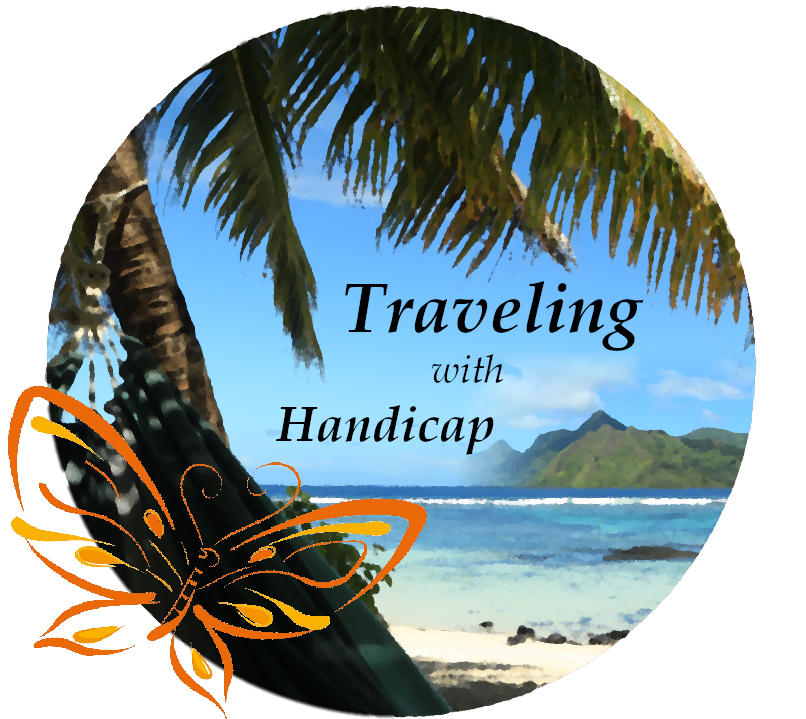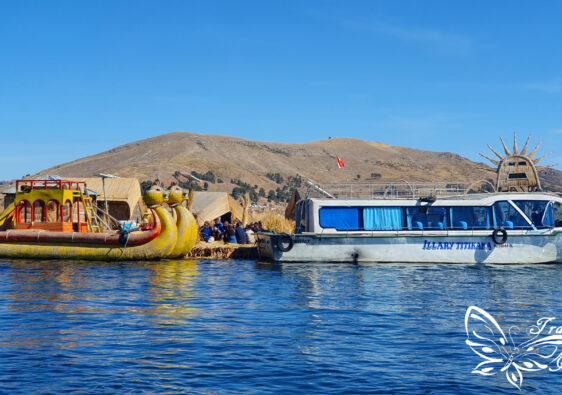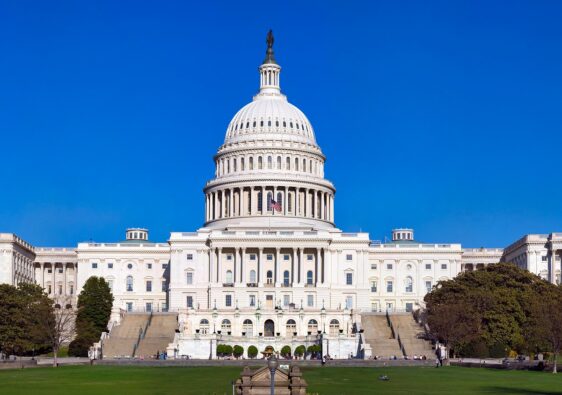Perhaps no country in Latin America is more picturesque than Bolivia, and the memorable Bolivian city is Potosi.
Nicholas Kristof
Bolivia (→ Wikipedia) is a very diverse country, with respect to both people and nature. You find any climate, from the tropical Amazon rainforest to the Altiplano with its 5000 and 6000 m mountains. Bolivia is officially called the Plurinational State of Bolivia, as this naming takes into account the cultural diversity of indigenous people living on the Bolivian lands.
The idea of this article is to
- Give an overview over recommended places to visit, including links to my more in-depth blog posts on the specific places
- Share information on the budgeting
- Talk about Bolivian culture and people
- Explain how to travel across Bolivia if you don’t have your own van to drive around and sleep in
- Add some final thoughts regarding accessibility
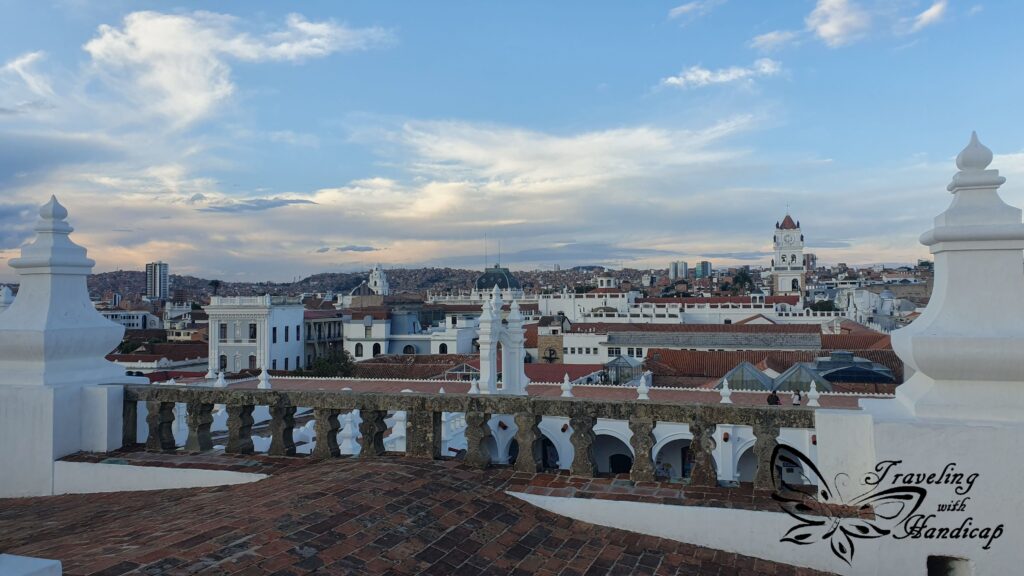
Recommended places to visit
Here, I share a list of recommended places to visit in Bolivia based on my experience. Of course, everyone has his/her own preferences. I have already been to hyped places which I didn’t like or “it’s not worth it” locations which I enjoyed. Therefore, take a closer look into my linked articles when considering visiting one of the places.
For an easier overview, I used bold letters for all places I have visited. Even though they don’t contain a link, I visited Potosí and Santa Cruz de la Sierra. Nevertheless, I will add some additional information after the bullet point list. I haven’t checked out Cochabamba and the nearby National Park Torotoro or Rurrenabaque and the National Park Madidi, though. This is why I’ll add some aspects of what I’ve heard and why I recommend them.
- The Uyuni Salt Flats, close to the (ugly) town Uyuni
- The Reserva Nacional de Fauna Andina Eduardo Avaroa (southwestern edge of Bolivia)
- La Paz (in combination with El Alto), Bolivia’s seat of government
- Hiking around La Paz (great 5000 m and 6000 m options)
- Sucre, the white city, Bolivia’s capital
- The mining town Potosí
- the Titicaca Lake with the Isla del Sol
- Cochabamba, which is known for excellent food
- The National Park Torotoro (accessible by bus from Cochabamba) to walk within dinosaur footprints
- Rurrenabaque, the entrance to the National Park Madidi (Bolivia’s part of the Amazon rainforest)
- Santa Cruz de la Sierra and the Parque Nacional Amboró right next to it
- Tupiza (worth to do a stopover if you come from northern Argentina, nice mountains around and a possible starting point for Uyuni tours)

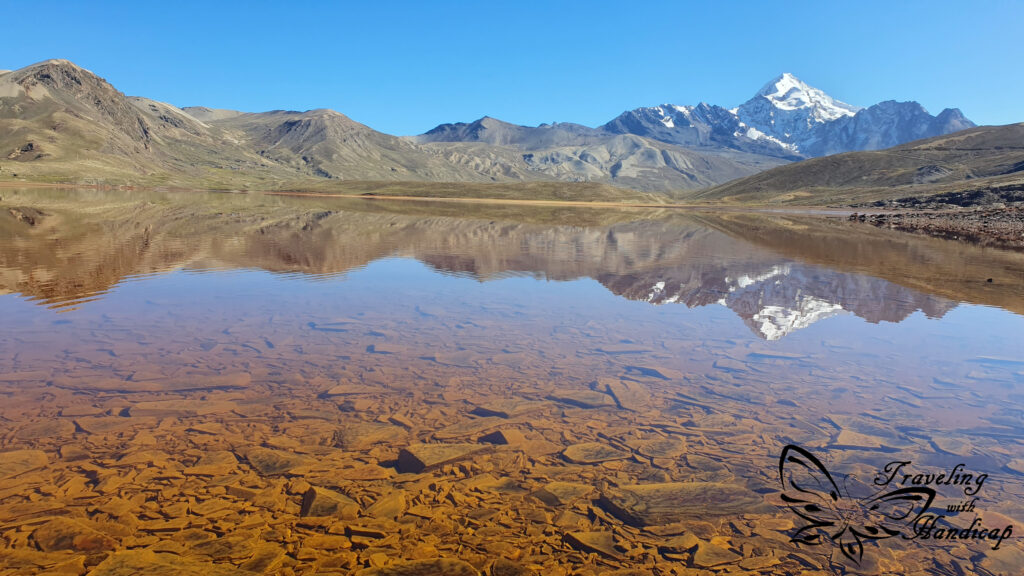
Visited places without an extra article
The mining town Potosí
I visited Potosí as a day-trip from Sucre. This was tough in terms of heading off really early and arriving back quite late. There are many minibuses connecting Sucre and Potosí minimum every hour (I assume more often). The bus ride takes approximately 4 – 5 hours. However, in my experience, the driving can feel quite “crazy” if you arrive in less than 5 hours. In this context, I recommend staying in Potosí for 1 or 2 nights if you have the time. There are quite frequent bus connections from Uyuni to Potosí. Therefore, if you want to stay in Bolivia after your Uyuni tour, you could head to Potosí as your next stop.
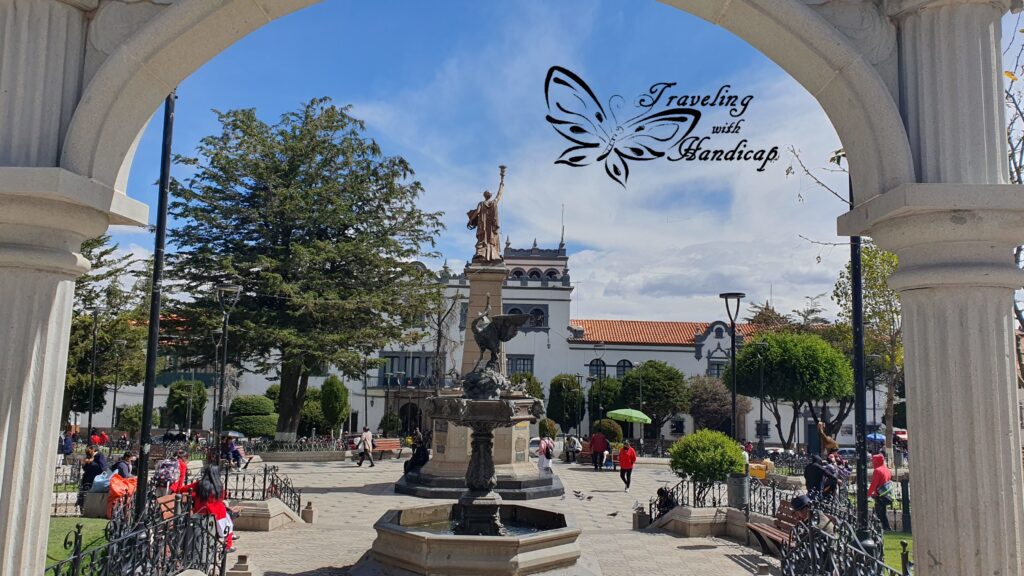
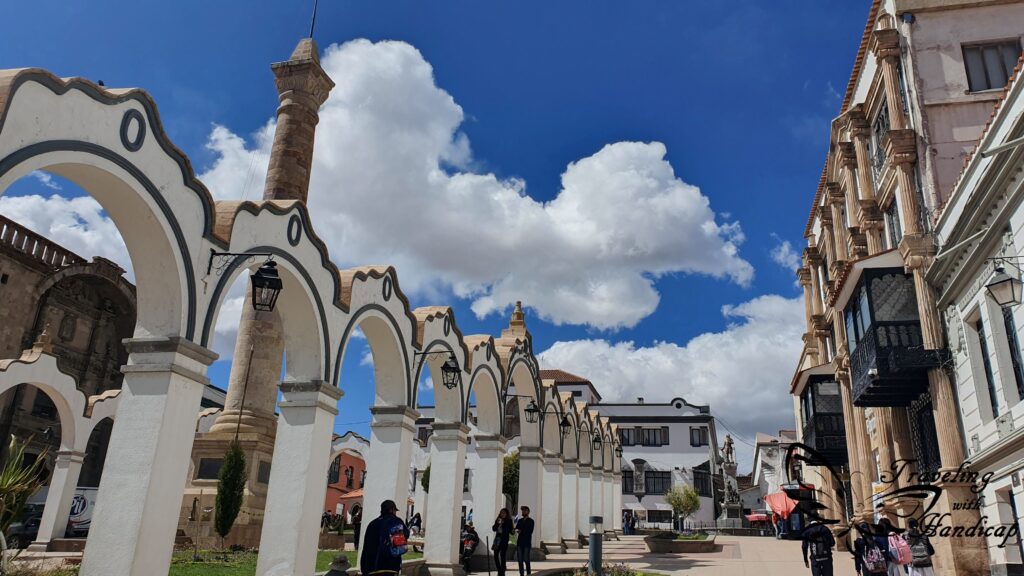
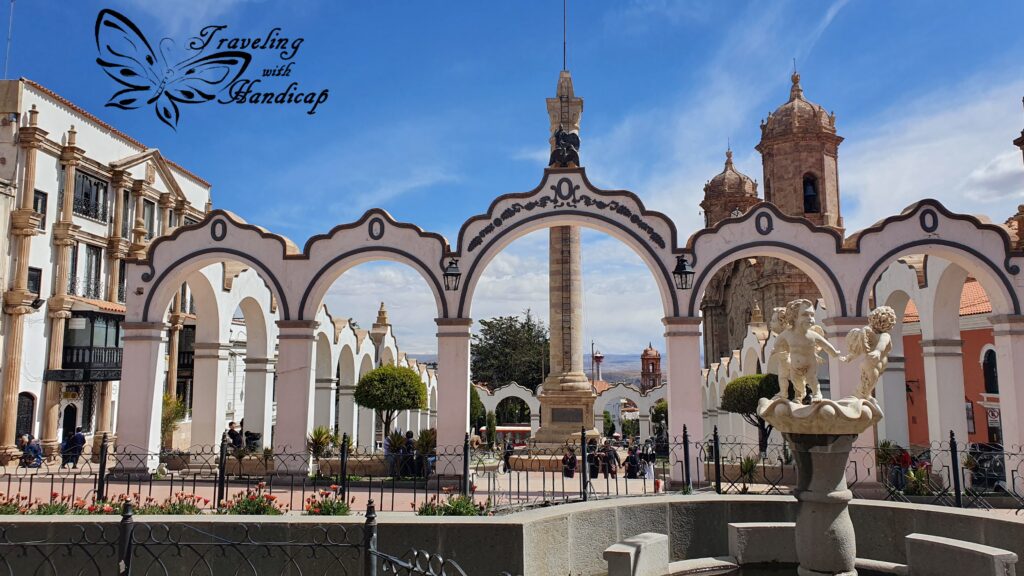

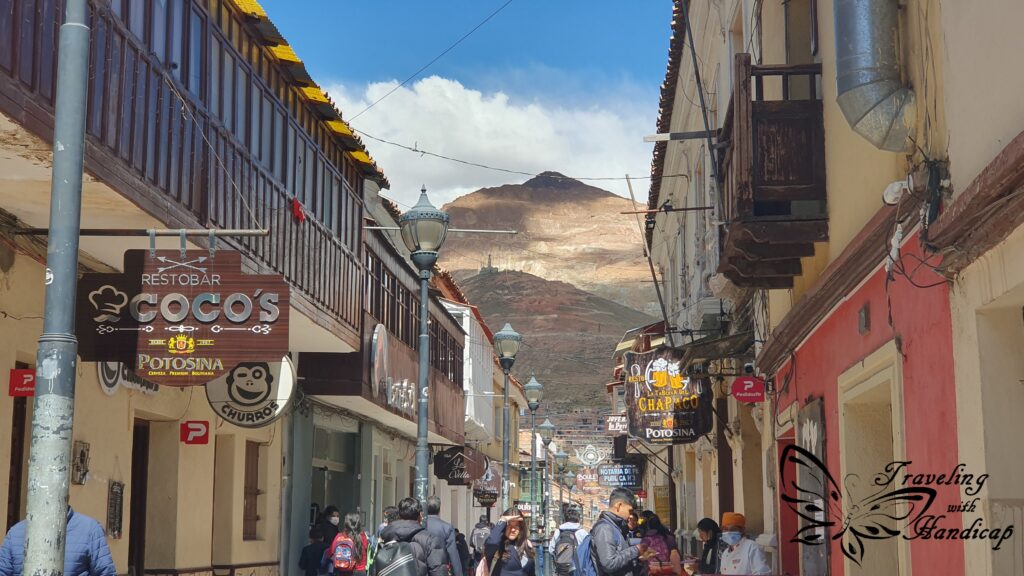

Potosí is located on high altitude, therefore, it’s rather chilly. The center of Potosí is quite colorful, as opposite to the white city Sucre and the red (not-patched) La Paz. It consists of many colonial buildings, the church, one or the other square and small walkways. The wooden balconies were the “key” connection for me to think about Spanish colonial times. It takes approximately half a day to explore the city center. All quarters further away are not any special, rather similar to La Paz as they are red and not patched. Potosí is quite large, but only the center with its colonial buildings is nice.
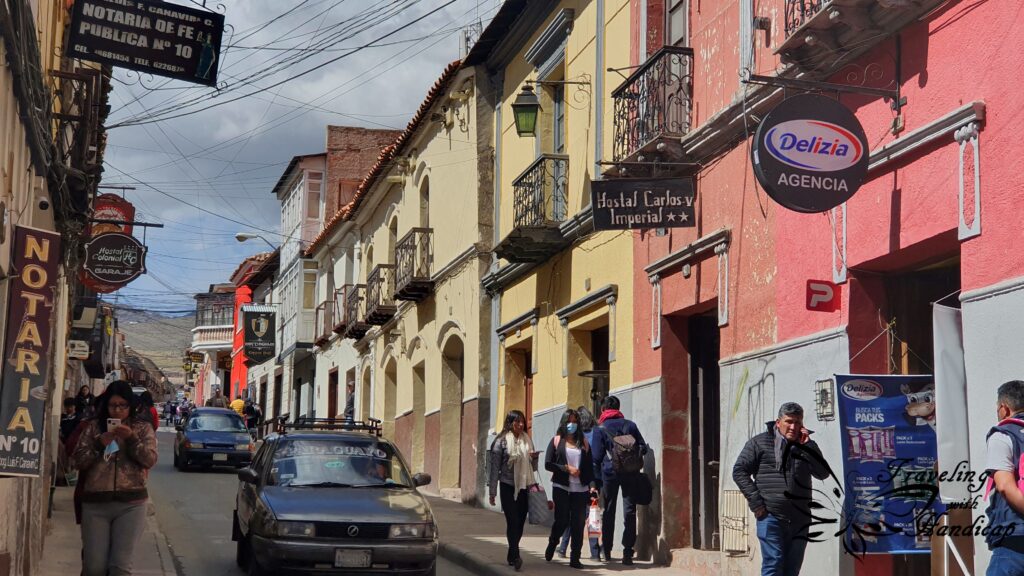

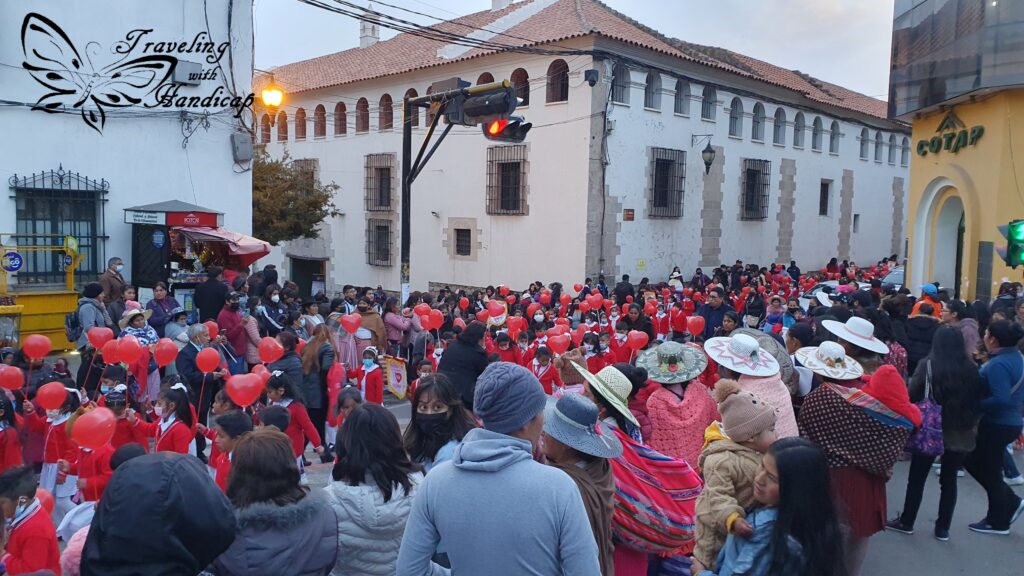
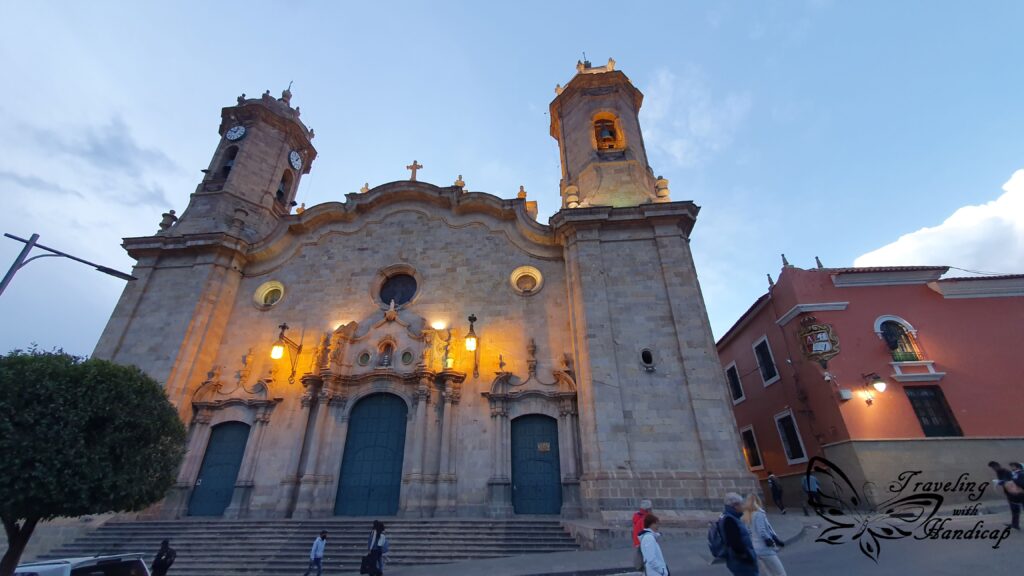
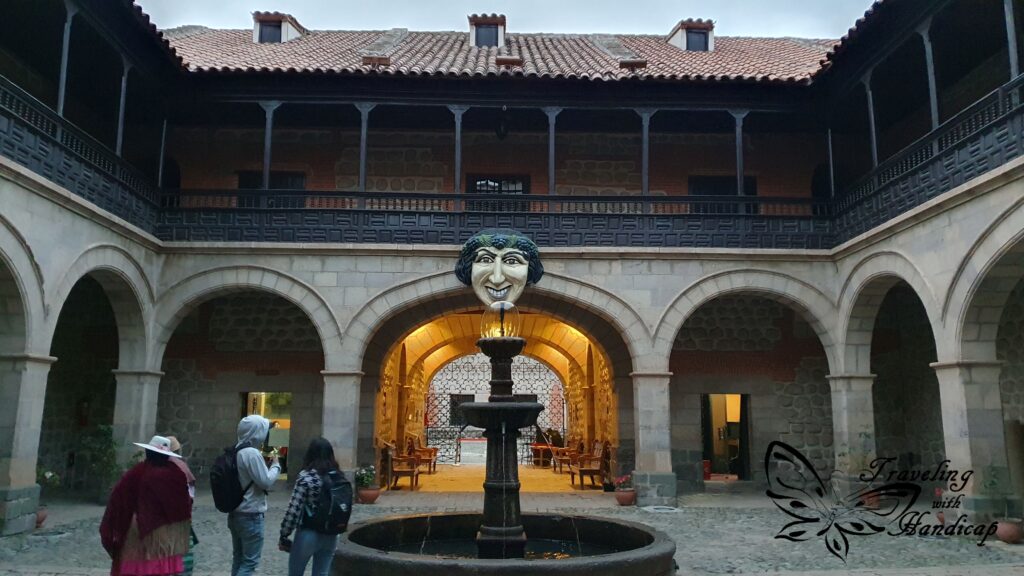
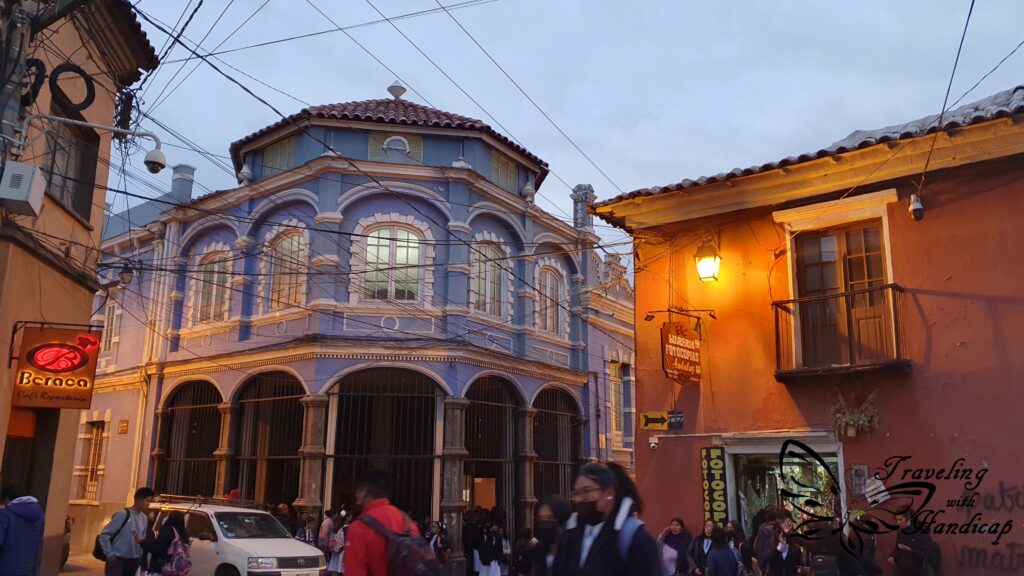
Visiting a mine within the Cerro Rico
The reason for why Potosí has so many colonial buildings is that it -once- has been the richest town of Bolivia. This is because a lot of silver has been found within the Cerro Rico, this is how the Spanish have called the mountain right next to the town. In my opinion, the naming makes perfectly sense, as you can get rich from the mountain. However, the workers haven’t seen much of the richness within their bank accounts, neither back then nor in our days. The mines of Cerro Rico can be used as a perfect example for the ongoing international corruption in our days.
I went to visit the mine with Koala tours in Potosí. This agency is very good, so I can definitely recommend them. Moreover, the tourists visiting mines are very important for miners. It is because as a visitor, you are asked to buy some presents for the miners within the miner’s market (e.g., dynamite, coca leaves etc.). If you don’t get it for them, they would have to buy everything themselves, as there is no “employer” who gets them all the equipment they need to have for performing their job.

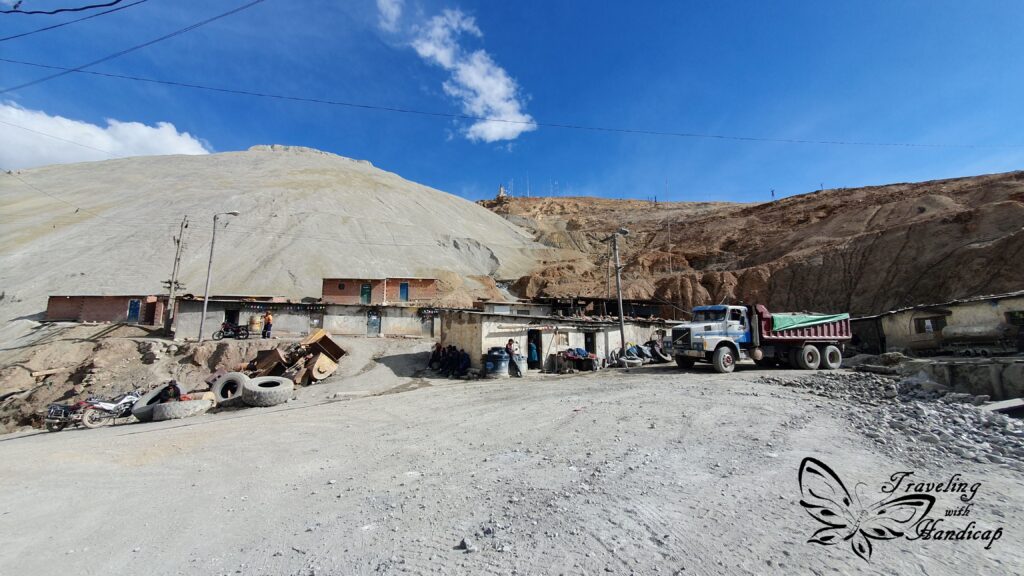
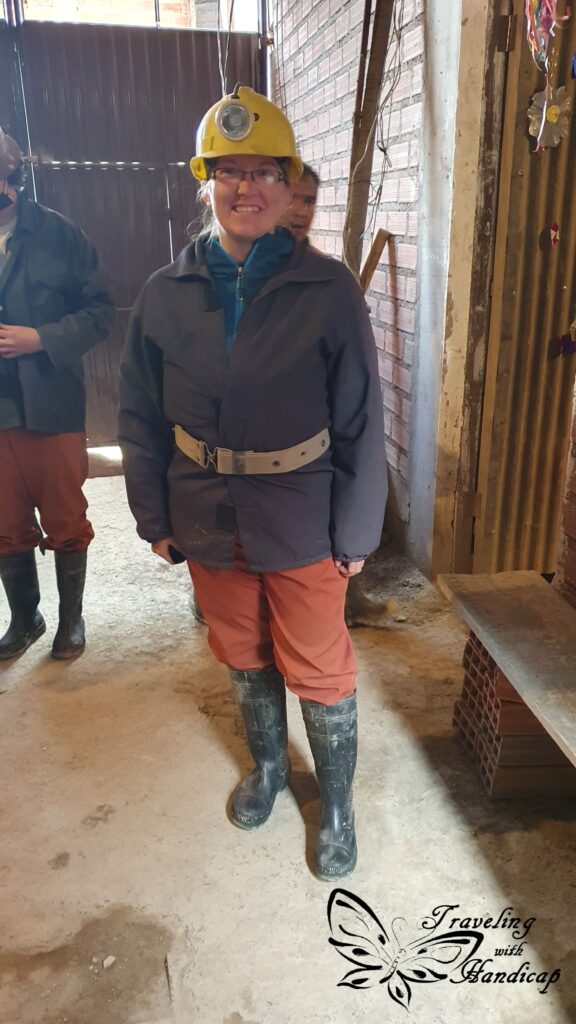
The mina Kunty visit
You may visit different mines, Koala tours offers the mina Kunty and mina Candelaria. I visited Kunty, which I could access more easily because it’s a rather modern mine. Candelaria is the ancient mine founded by the Spanish for the silver. In the latter one, you would have to crawl through really thin passages, which I didn’t want to risk with my disability. I stayed within the completely dark tunnels for more than 2 hours. You literally don’t see anything than what the tiny light on your helmet offers. As I don’t like any hikes starting/ending in the dark, I decided to visit the mine, which allowed me to at least walk upright.
I talked to some miners during the track. I looked into many exhausted faces, even of almost kids. Not only that, but I met 16 years old guys working in the mine. Miners are working really hard, pushing wagons of up to 2 tons out of the mine. Miners chew coca leaves all day, as this keeps them active and awake. Depending on the current market price of the minerals they get out of the mountain, they work some hours or even day and night. Working in a mine is unhealthy enough for people to lose their teeth (because of coca leaves) and to have an average life expectancy of 40 years.
During the visit, we also saw the “tío” (uncle) who gets offerings to make the miners find more valuable minerals. These days, there is no more silver available in the mountain but plenty of other minerals. Miners have told me that no current politicians of Bolivia have been seen inside the mine. But on the other hand, these people earn the most of the minerals distributed to the “western countries” which waste them.
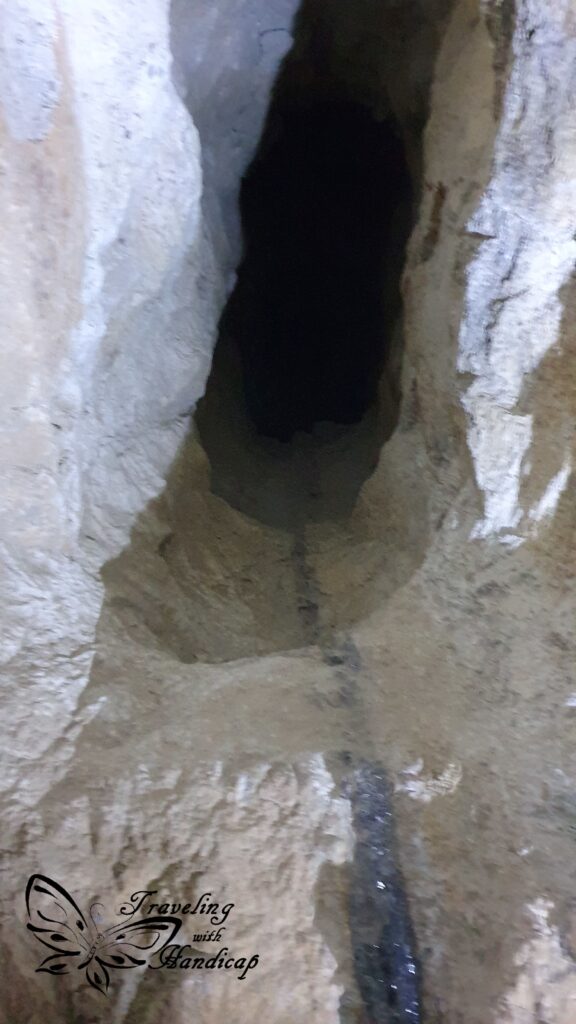
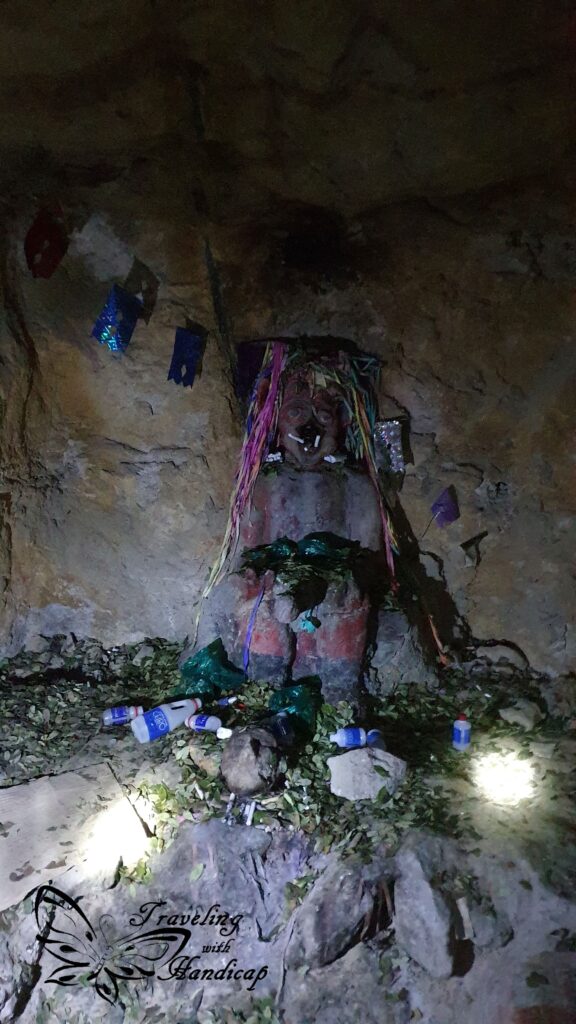
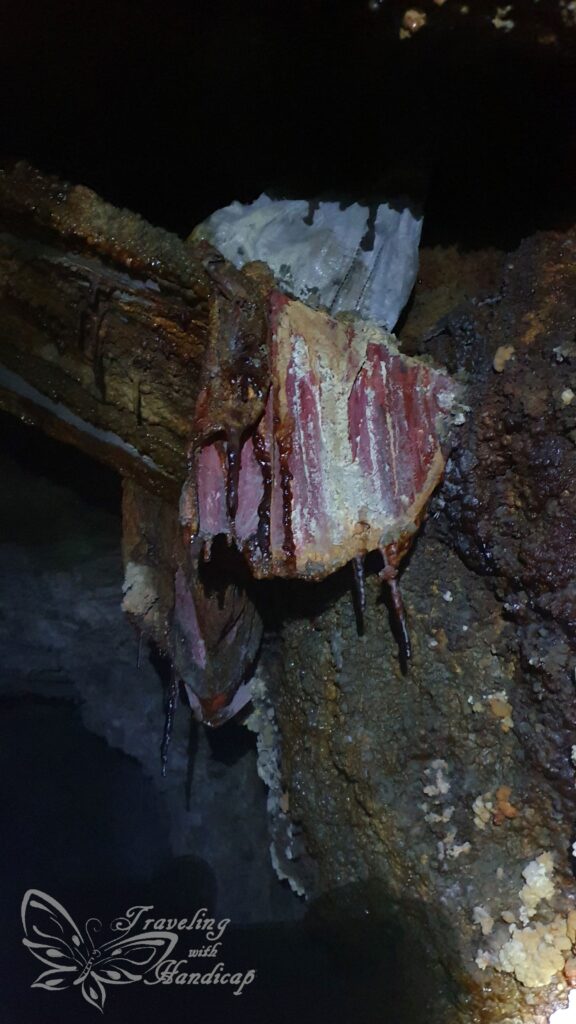
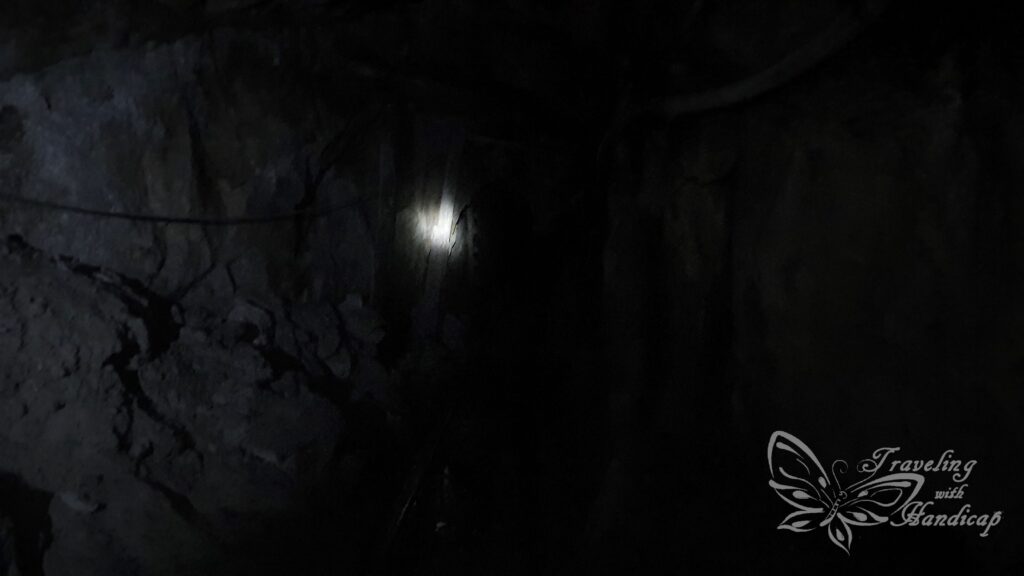
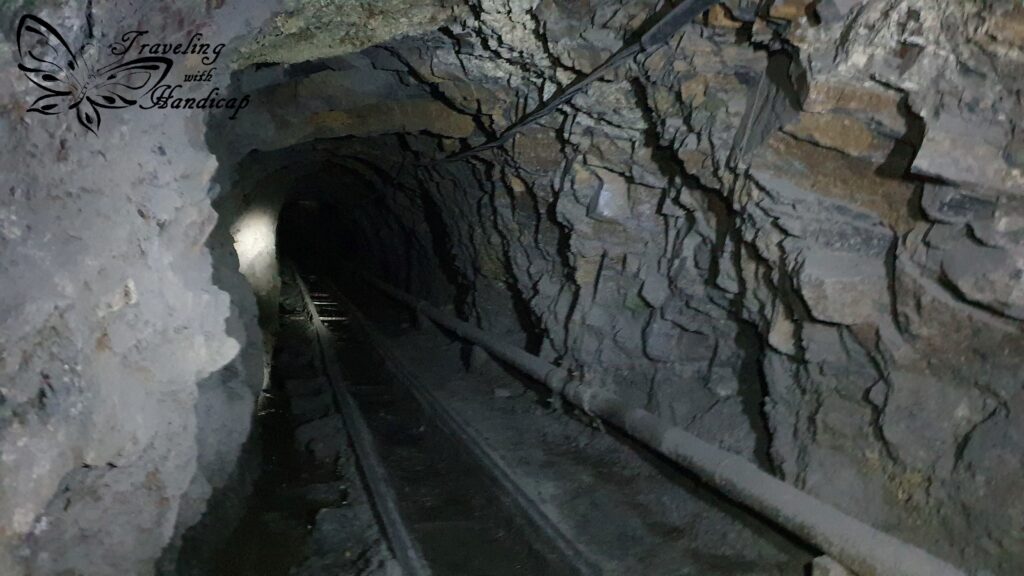
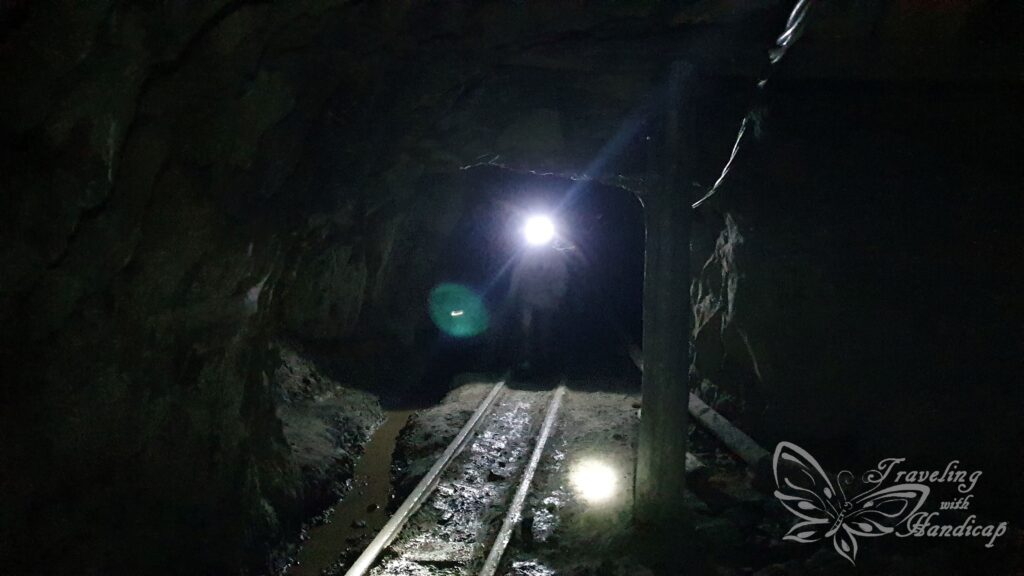
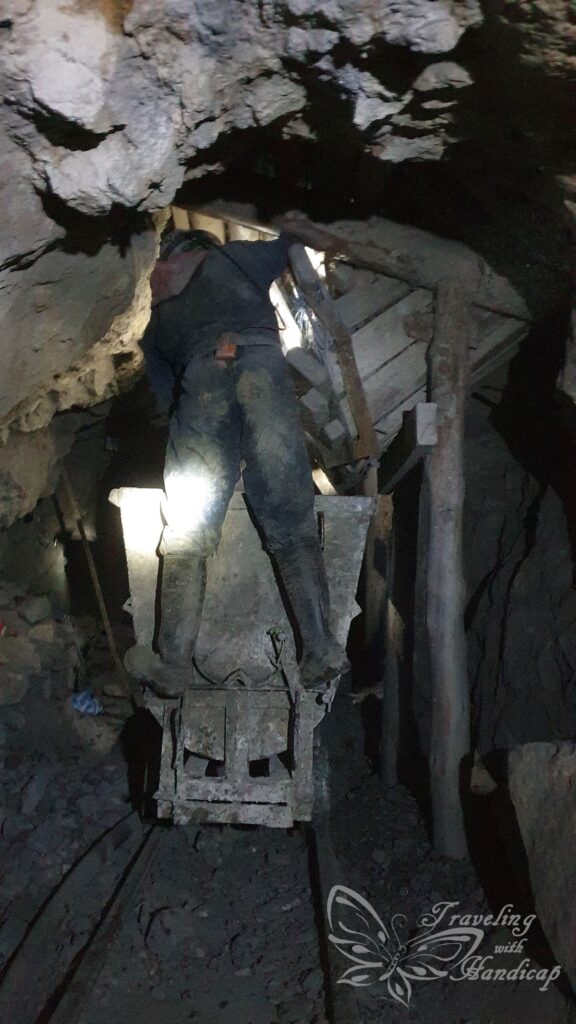
Santa Cruz de la Sierra
My intention was to visit Asunción after Bolivia. From Asunción, I continued to the Iguazú Falls. In order to get to Asunción, I had the option to either fly or take a really long bus. No matter which option, I would have to do a stopover in Santa Cruz de la Sierra. I decided for the bus and spent 2 nights in Santa Cruz in between of two very long (night) bus rides of 12 and 24 hours, respectively.
Santa Cruz is a rather modern city, the climate is tropical. There are many mosquitos, so always have protection (with DEET!) on. The center of Santa Cruz consists of nice colonial buildings, the church as well as the other buildings around the main square are nice during the night as well. You can get excellent food from the new market, where local people sell their dishes, for approximately 10 bolivianos (€1.50).
I didn’t explore the National Park Amboró nearby, as I stayed short enough for only Santa Cruz. I have seen many cool mountain ranges across South America already, within Bolivia around Tupiza for example. If you are only visiting Bolivia, spend more time in Santa Cruz to also have the time for the surrounding nature (there is a lot).
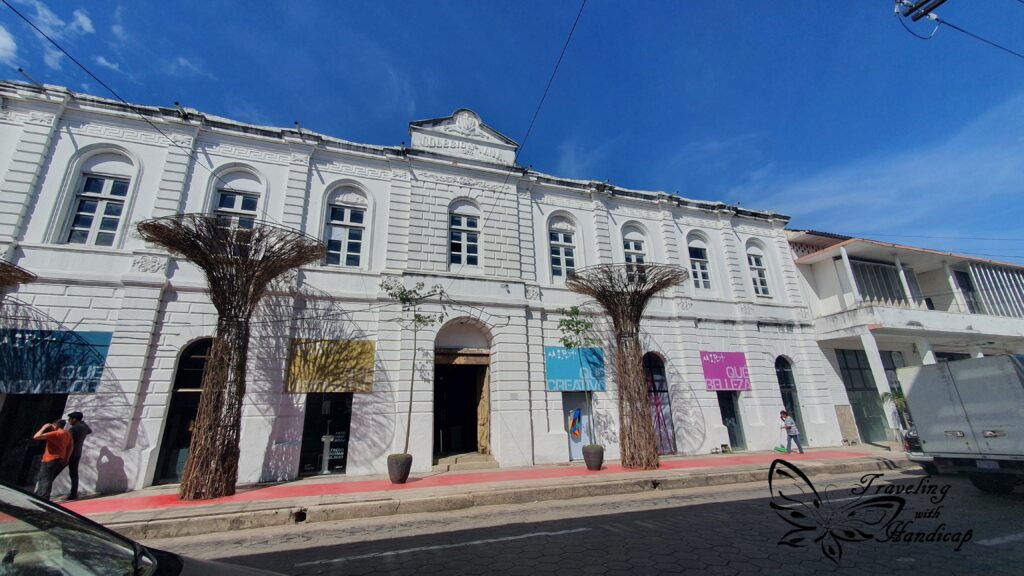
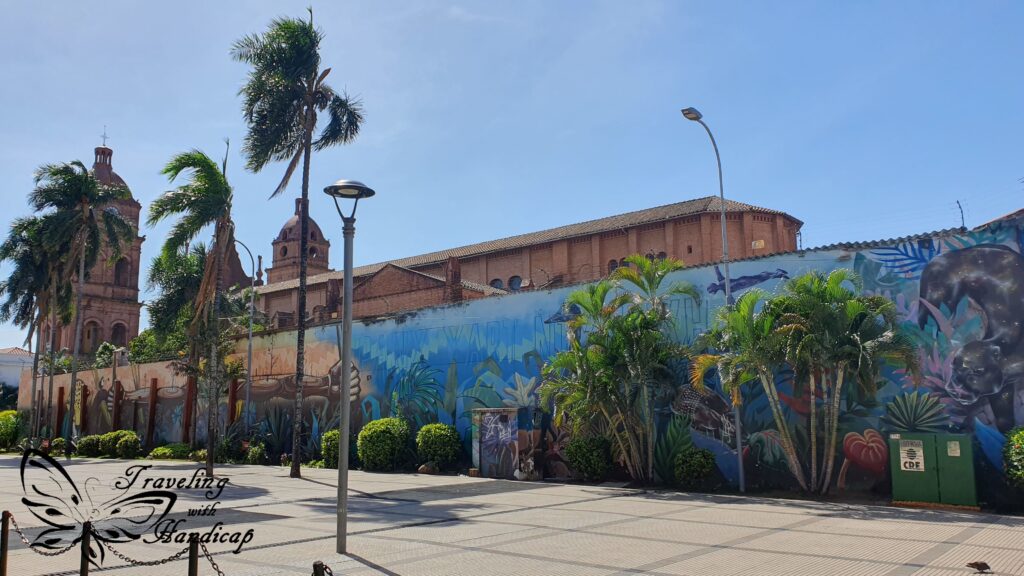
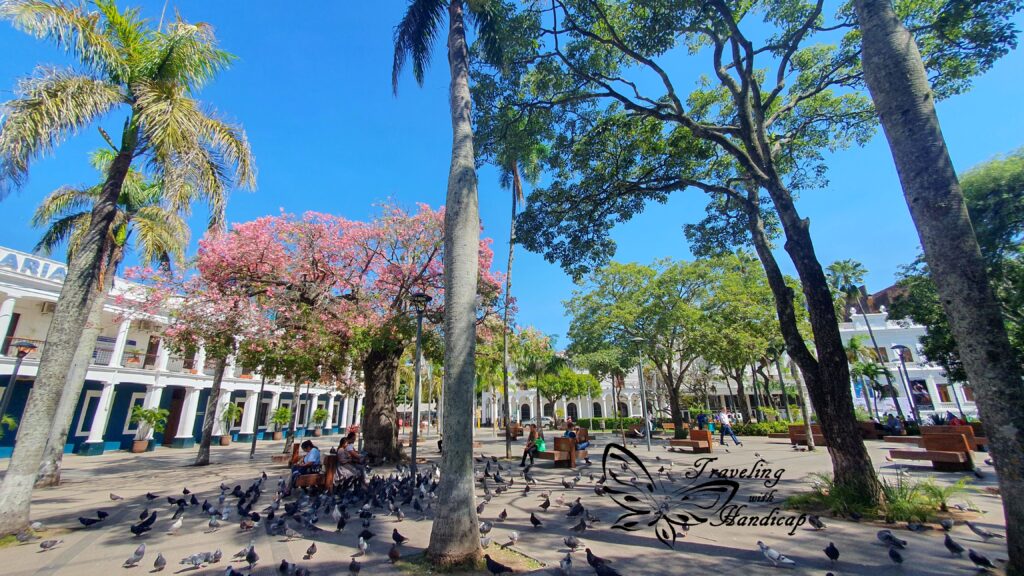

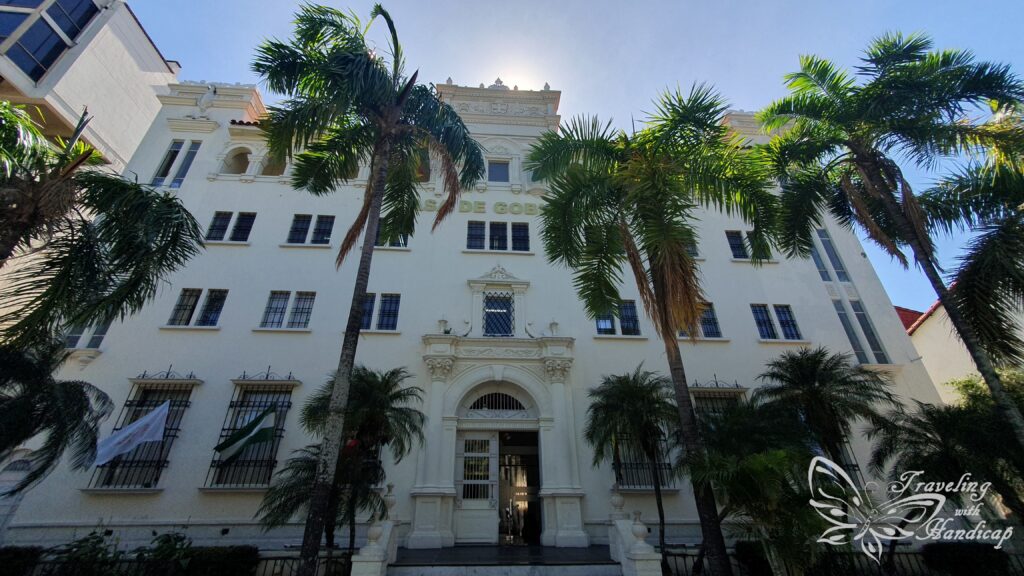
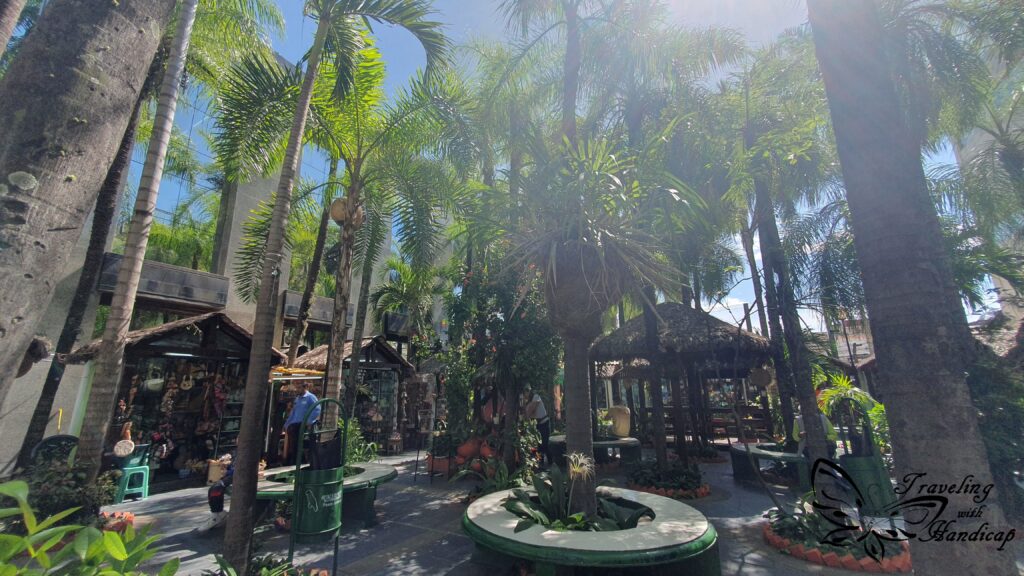

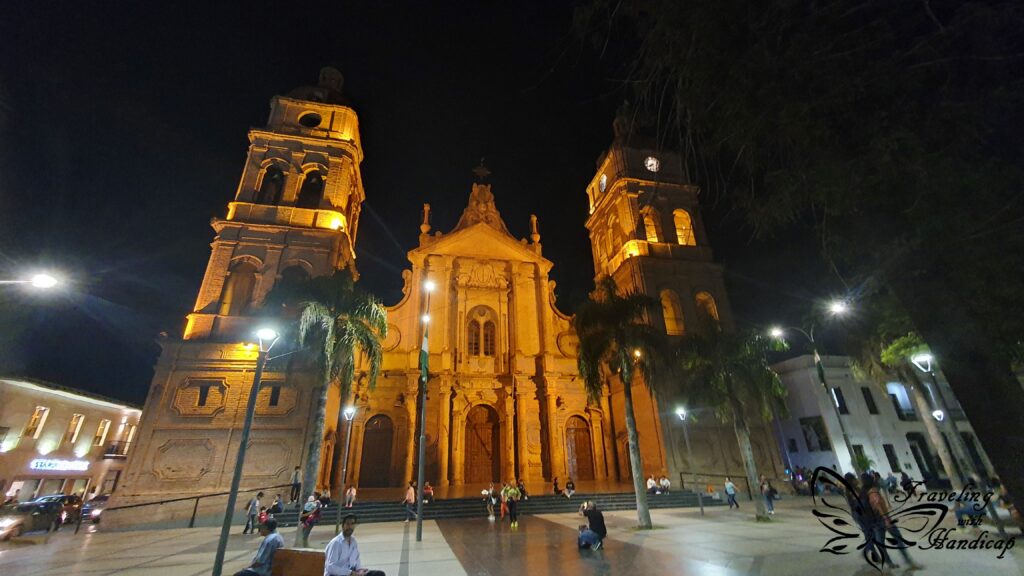
Other recommendations
Cochabamba and the National Park Torotoro
Cochabamba is known for two reasons, the excellent food as well as the buses towards the National Park Torotoro. Currently, Cochabamba is the fourth-biggest city of Bolivia, very modern and industrialized. Its center is -similar to Santa Cruz de la Sierra- a collection of well-kept colonial buildings.
Travelers told me they take a short stop in Cochabamba for visiting the Torotoro national park. Within this park, you can hike within great natural landscapes and get to watch dinosaur footprints on the way. If you are short in time and visit Sucre, check out the collection of Dinosaur footprints right next to Sucre and don’t do the couple of extra days for Torotoro.
Rurrenabaque and the National Park Madidi
If you want to visit the rainforest within Bolivia, the National Park Madidi is where to go. I wanted to visit the Amazon Rainforest from other countries, so I didn’t go there within Bolivia. It always depends on your own preferences for traveling. Mine are to visit many places and landscapes, so I skipped Madidi.
Rurrenabaque is the town to stay, from where the tours start into the park. I heard about different tours, each having good and bad recommendations online, so I recommend checking TripAdvisor beforehand. You may book tours from La Paz, some even offer booking flights or buses to/from Rurrenabaque for you. Just one hint, the humidity is extensive, so all your stuff in your backpack might feel wet afterward.
The National Park Amboró
This national park is located close to Santa Cruz de la Sierra, within central Bolivia, and home to many species of birds and mammals. You might detect (if you’re lucky) pumas, ocelots, and bears. More detailed information on Wikipedia or other travel recommendation websites.
Budgeting in Bolivia
No matter which country you come from, you will need more cash than in any other country across Latin America. Literally, you pay everything in cash. Sometimes, the option of credit card payment is provided, however, usually with an extra fee.
Therefore, I recommend getting out cash in the first bigger town you are in. The ATMs in the border towns are known to not be too reliable. So, if you know you need to pay for a bus or taxi from the border, bring enough cash from the previous country to get exchanged in cash after passing the border. Otherwise, get cash out from ATMs in the big towns.
I had good experiences using the ATMs of Banco Union S.A., they are distributed well in any bigger town I stayed in. As well, they didn’t charge any fee on top when taking cash out (with an international card). However, always check the current status of possible credit card fees before you travel. There are some bloggers focusing just on these aspects.


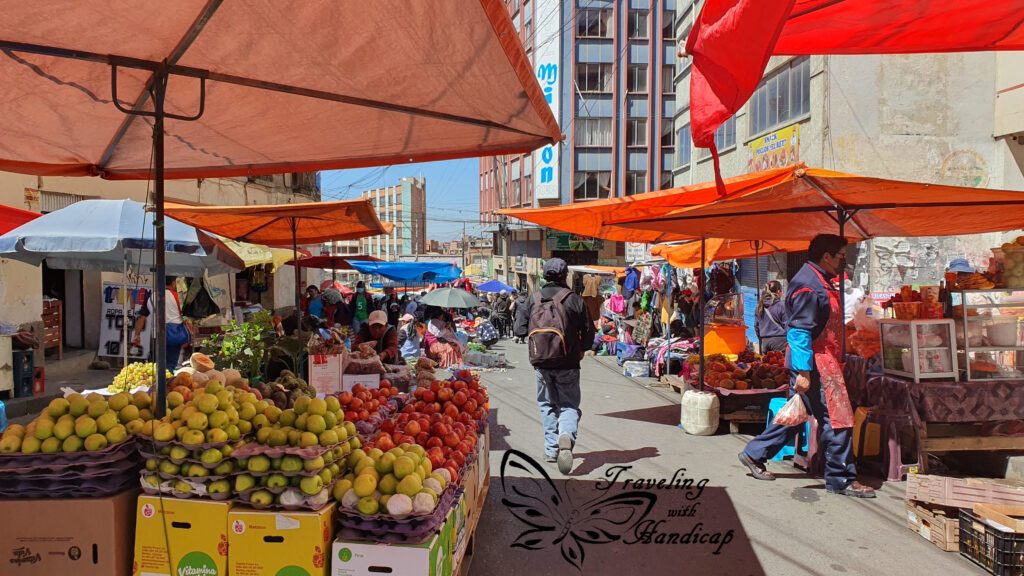
Getting cash out
The maximum amount of cash you can tell the ATM (of Banco Union) to get out is 500 bolivianos (a bit less than €70), which is not much. But don’t get worried, this is not the maximum of a day, you may just repeat getting out 500 bolivianos within the same ATM a couple of times. I assume this is because money is placed in the ATM as packs of 500.
Since everything is in cash, many people need to get out cash. Therefore, certain ATMs might be out of cash. Banco Union had many ATMs, so I looked for a different one. I always preferred the ATMs next to a service office of the bank, because these were more likely to have cash. And, just in case an ATM would swallow my card, I could easily talk to people from the bank (never happened to me).
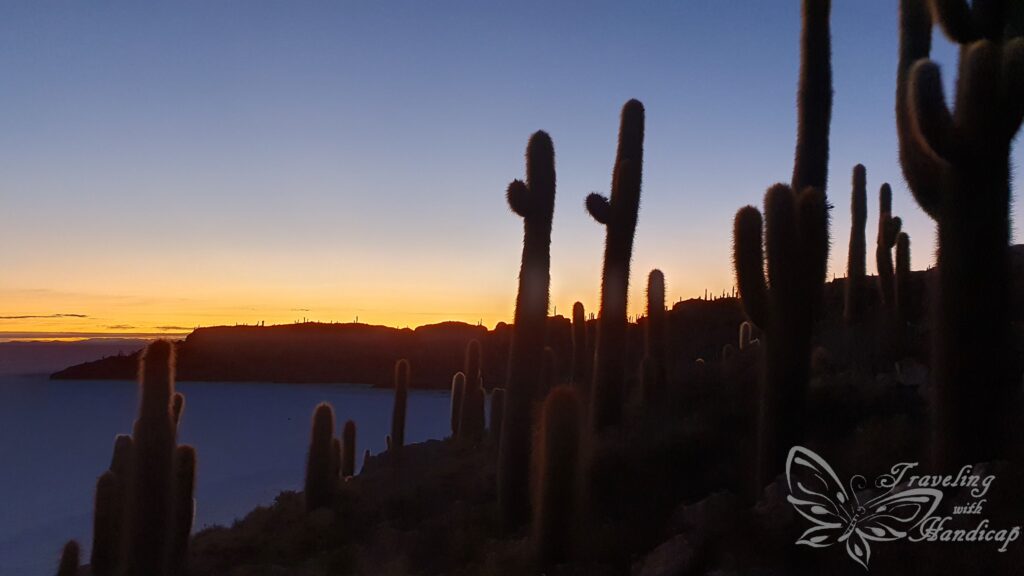
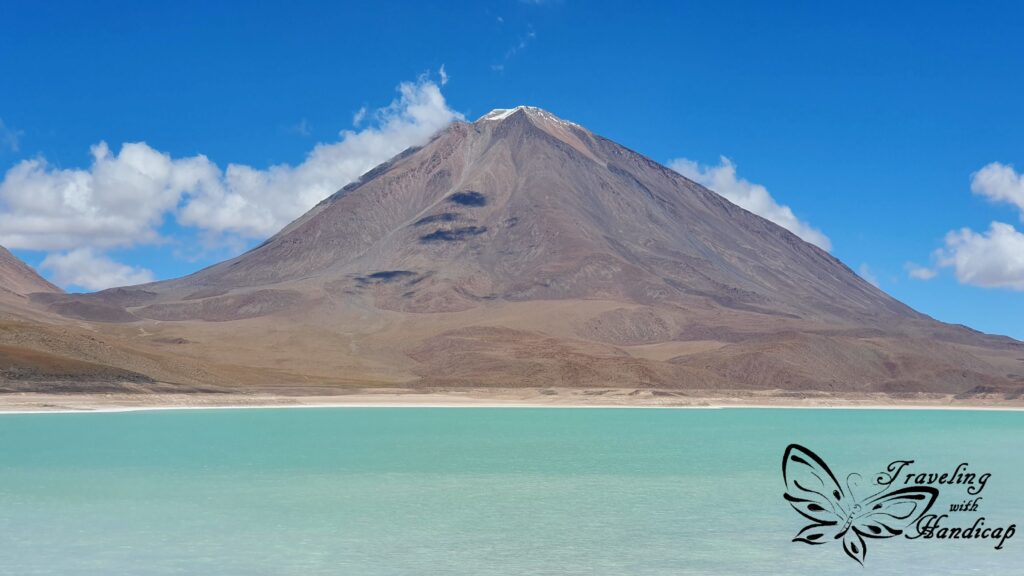

Planning your budget
Bolivia is an overall cheap country to visit. The combination of low prices and great diversity of cultures and nature makes it a great destination to see a lot with not much money.
You can get really cheap food in Bolivia, but if it’s too cheap, it might not be the best for a European stomach. Keep in mind that many hostels across Bolivia don’t have a kitchen included, as many people just go out to eat. A lunch of €1.50 is indeed a lot cheaper than getting all the ingredients and preparing a full meal yourself. But this is the price from a local market (in Santa Cruz), not from a restaurant. Therefore, I recommend checking the availability of kitchens in your hostel, even if this makes them a little more expensive.
You might as well need to take taxis, as the bus terminals or airports are rather far away from the nice center of town. Always ask in your hostel regarding the taxi fares before you arrive, as taxi drivers tell you any price if you don’t already know how much it is.
Bolivia is also a really affordable place to pay for a Spanish course as well as for tours. There are providers charging a lot and others having fair prices, even though they offer the same quality. Therefore, check TripAdvisor and ask for prices in different stores/ companies.

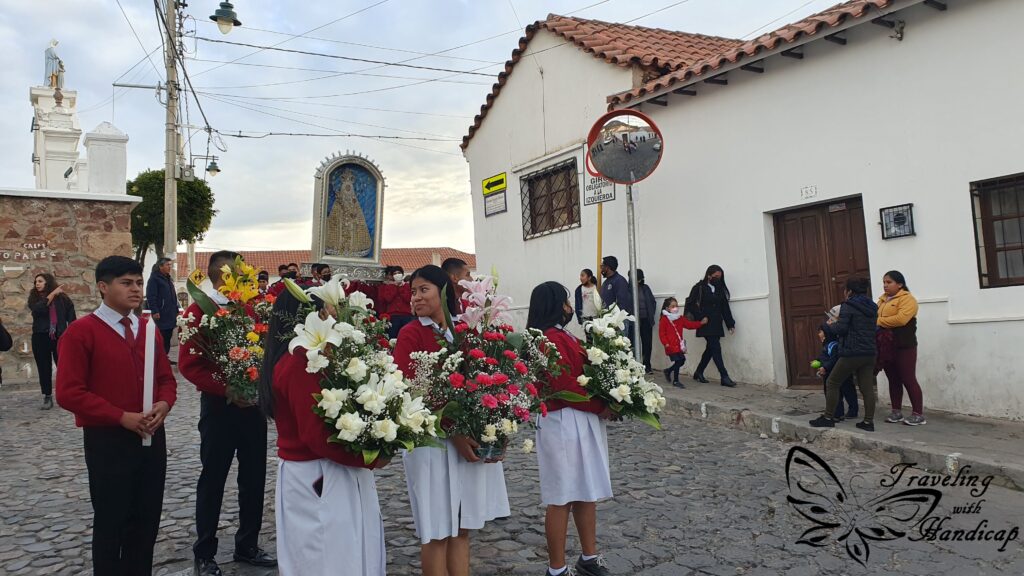

Bolivian culture and people
Many indigenous nations live within Bolivia as well as Amerindians, Mestizos, Europeans, Asians, and Africans. The official language is Spanish, although 36 indigenous languages have official status. The three most commonly spoken indigenous languages are Guaraní (east), Aymara (north) and Quechua (south). This is why Bolivians don’t have a strong Spanish accent, some even learn Spanish as their second language as they grow up only speaking an indigenous language.
I experienced people in Bolivia as very friendly and helpful. Communication will be a lot easier if you speak some Spanish. People in the big cities of Santa Cruz de la Sierra, La Paz and Sucre as well as Uyuni sometimes know a little English because of the many international tourists.
Bolivians don’t like Chile because of the Pacific war, in which Chile occupied and won some former Bolivian territory. Actually, this territory is rich in minerals and after the war, Bolivia had no more access to the sea. Paraguay and Bolivia are the only two landlocked countries within South America. So avoid speaking positively about Chile while traveling across Bolivia, just avoid talking about that country.
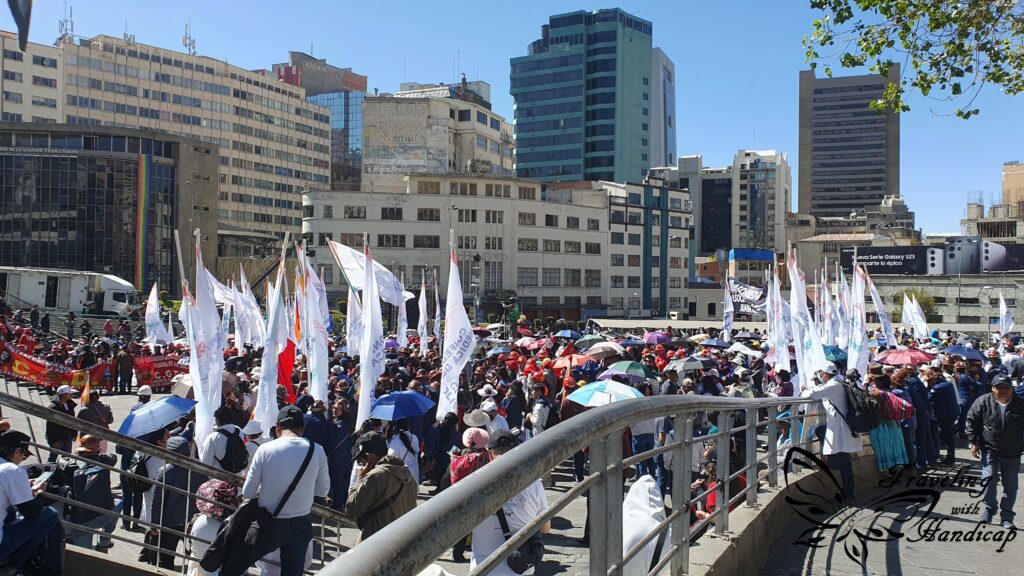
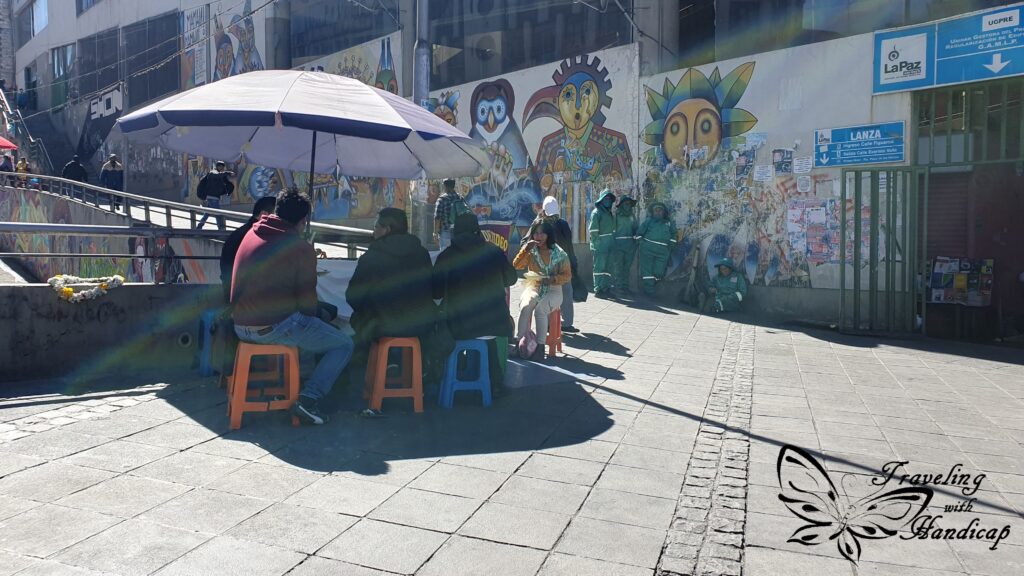
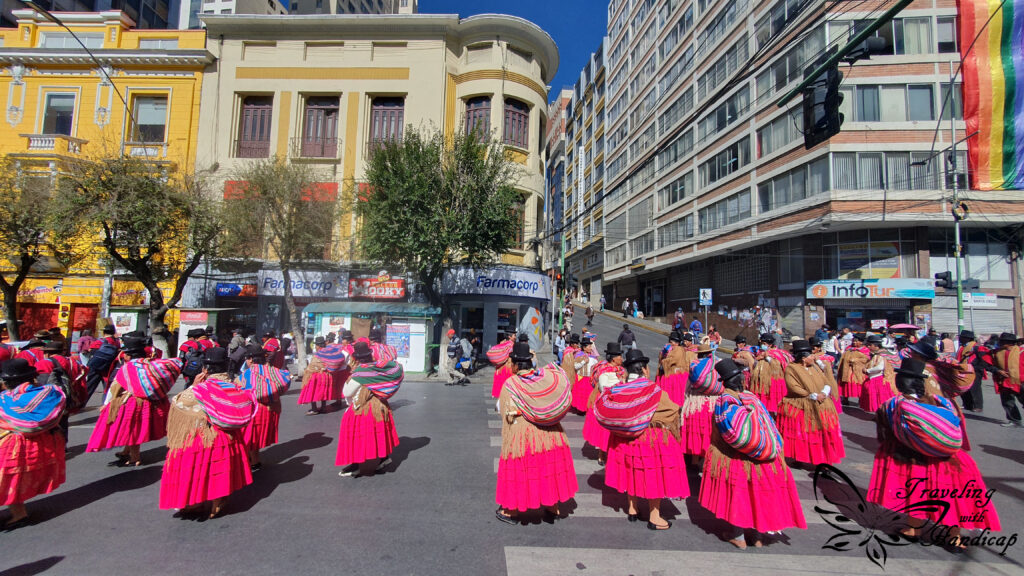
Social Development
In terms of social development, Bolivia got stuck in another time. I have been asked multiple times when my husband is, why I’m traveling alone or why I’m not married. In their understanding, you would not go anywhere abroad without your husband as soon as you are married. Moreover, their understanding of being a wife is quite “ancient”. As soon as you’re married, your only job is to get kids, take care of your kids and run the household. The only job you might have is selling food or other stuff on the streets or a market. But only if this doesn’t neglect your kids and husband.
A big problem of the countryside is that many women get pregnant at a very low age, even at 15 years old. Then, they don’t finish their education as their only job would be taking care of the kids and cooking anyway. In Bolivia, the idea that as a woman, you should get married between 15 and 25 years of age is quite present. If you are older than 25 and not married yet, you seem to be “not good enough”. There are some women who try to escape this, be more self-sufficient. But these women have then to decide against their own family or marry internationally to a husband from a more developed country.
Moreover, moms seem to be quite oppressive. We would call them helicopter moms. I have heard that when kids want to move out and to another city to attend university, moms follow their kids and also move to the new town, just to always be the one “in control” and “knowing everything”.
How to travel across Bolivia
Bolivia looks quite small on the map, however, it isn’t. Moreover, the streets connecting towns are not necessarily straight and fast, a bus ride takes a lot more time compared to the same distance within Chile or Argentina (where it’s rather a very straight road). I still recommend going by bus as it’s quite affordable.
Different options
There are flights, but getting to the airport (further out of the city) often takes a lot of time. Moreover, flights might be a little more expensive than buses and take far less time. However, the longer bus rides are only available during the night, therefore, you don’t miss a day and safe one night in a hostel.
I wouldn’t rent a car just for Bolivia, since there are many minibuses available to all places. Moreover, the traffic is rather crazy, not the most relaxing situation for drivers. If you already have a van to travel across South America or further, check out which places are safe to keep the van while you are exploring a town or where you are allowed to sleep in the van. In La Paz, for example, the best place to keep the van is the paid parking at the airport.
Traveling by bus
Bus rides are not for fixed prices between destinations, different companies have different prices. Normally, at least in the bigger cities, you find an information sheet at the bus terminal which price range to expect. Never pay more than the maximum of the sheet. I highly recommend trying to negotiate and asking different companies. As soon as you have an idea of how the prices are and where many locals buy their tickets, you can decide upon which company you go with.
There is another type of bus which has the same rate (20 bolivianos) across the whole country, don’t pay more. These are the minibuses or minivans to transport people to surrounding towns and places. I recommend to check if there are minibuses available to your destination, they are cheap and convenient. The drivers might, however, have a quite fast driving style if the distance is a little longer.
From La Paz, for example, you shouldn’t take an expensive tourist bus to Copacabana, but instead a minibus from the Cemetery-terminal. They leave as soon as they are full, the little bus leaves from there every hour approximately. Another place to access by minibus from La Paz is Copiapó. You wouldn’t find this name on the buses but need to ask around which bus to take.
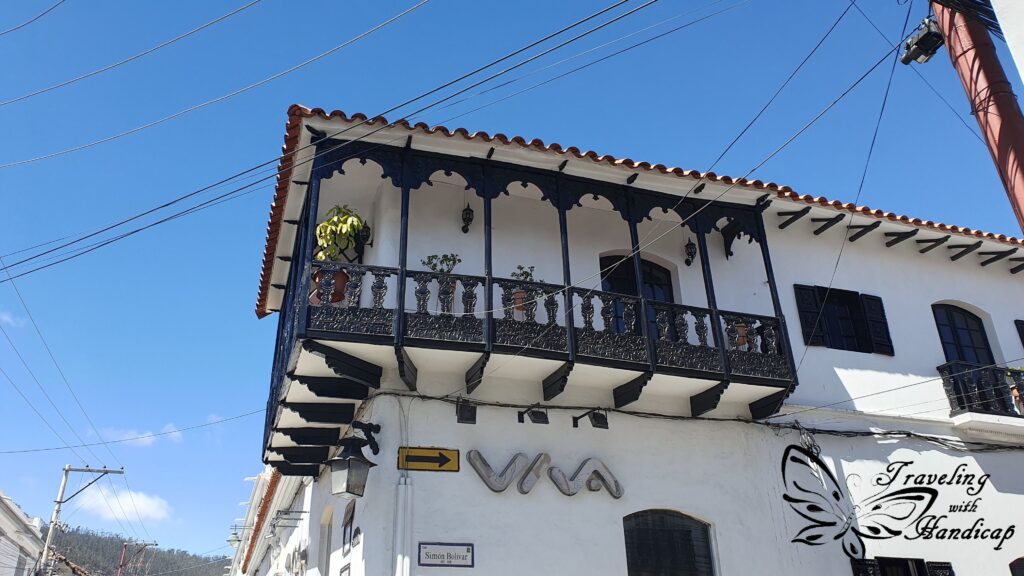
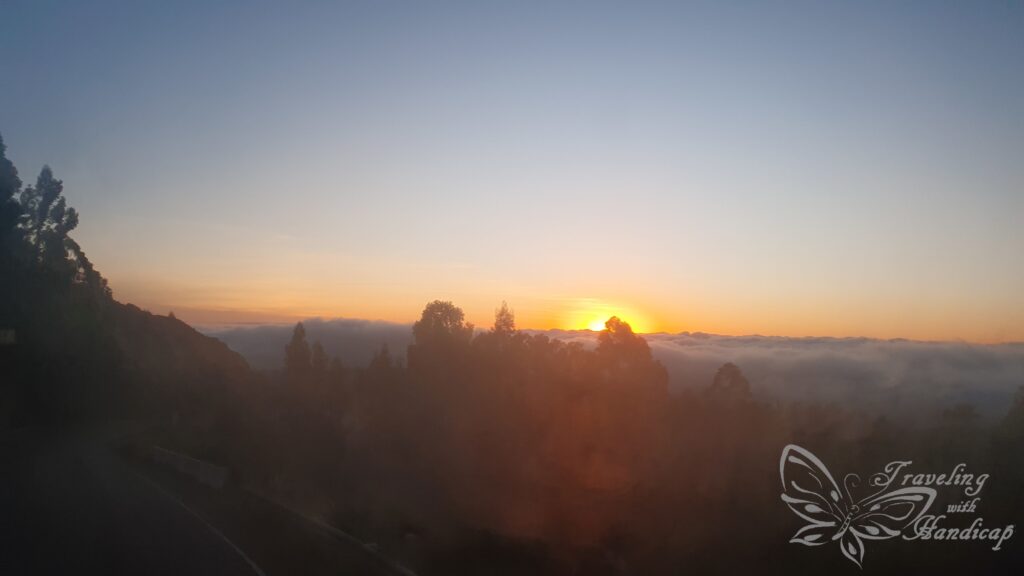
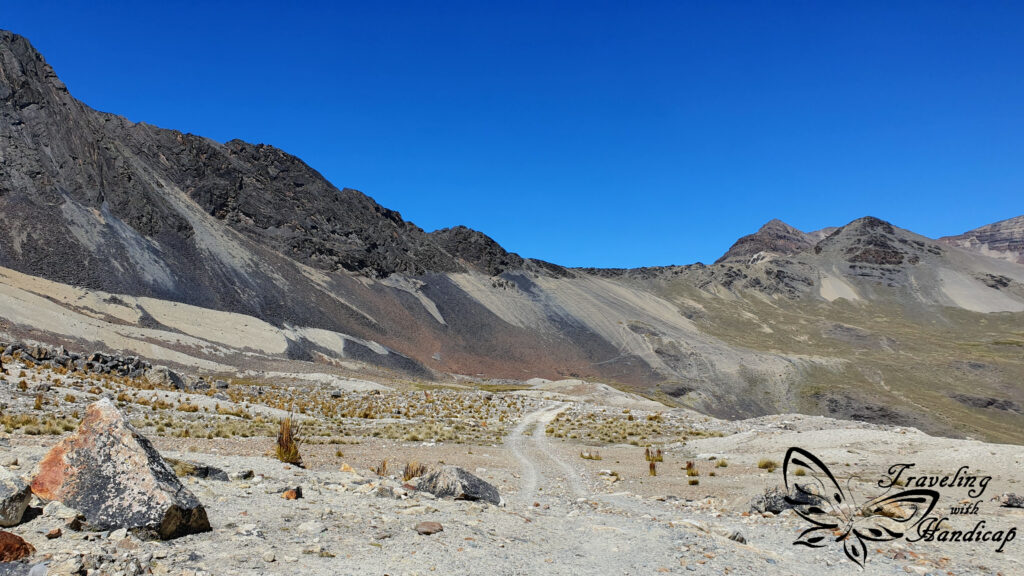
The perspective of accessibility
Bolivia is quite diverse, but not really accessible. Santa Cruz de la Sierra was the only place I visited that was rather flat and therefore less difficult regarding walking aids. I didn’t see many people with wheelchairs, as going up- or downhill is rather difficult. Maybe, these people have to either stay at home or move to rather flat cities.
There are no official discounts for people with disabilities. For entrances, there are often two rates, one for Bolivians, one for internationals. Regarding buses, I frequently saw the sign of that if you have a disability of more than 50%, you pay only 50% of the price. My disability card is from Germany, and the tourist buses weren’t too expensive. Therefore, I never tried to get to the 50% but used my disability to negotiate for better prices.
The nature within Bolivia is incredible. However, it’s rather inaccessible. Tour providers are not set up for people who have certain restrictions. I even struggled to find a specific layout of bike different from mountain bikes for the Death Road. Also, the vans and cars used for tours are not really accessible. I have never seen any car-like thing which was created for wheelchair users.
Therefore, I was happy to have visited Bolivia for as long as I am still able to walk. If you need help getting around, like if you are blind, need help walking etc., Bolivia is really difficult to visit. I wouldn’t say impossible, but then you should for sure come with company who can help you. Moreover, you should be able to communicate in Spanish if you have restrictions. People might know tourist vocabulary in English, but nothing that goes beyond this.
